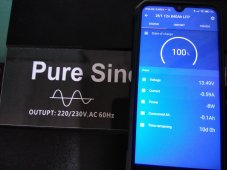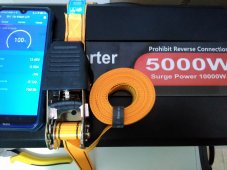I call it the cost of doing business. Or it takes energy to make energy. The thing to also keep in mind that the overhead does not stop at the output of the inverter. Loads themselves can eat your precious watts and give you little back for doing so. Many things have inefficient power supplies, always on power supplies, and consumer driven demands such as an always on yard light that add to your daily watt-hour needs. Solar power only works part of the day but your need for power is 24 hours.
Many inverters have a idle setting that reduces self consumption but the drawback is they then have trouble with small loads. If some method could be used to have every load communicate with the inverter to allow it to set how much it needs to output you might reduce total overhead.
Becoming a watt miser where you count each precious watt developed and consumed can lead to madness.






